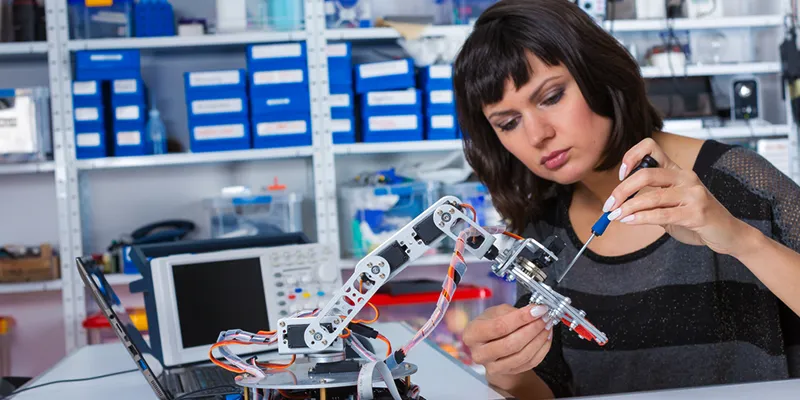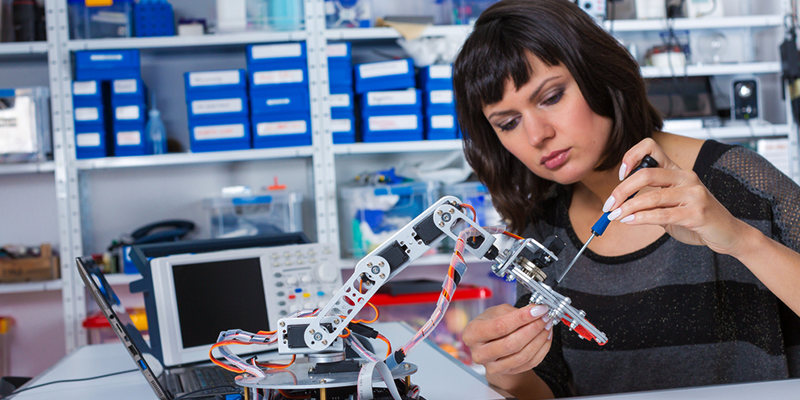The principles of conversational UI: the guide to build a perfect bot
Tips to build near-perfect bots for great consumer experience.

The future is here already. Conversational interfaces are part of corporate strategy because they have started to make a real impact on business. Getting a conversational UI for your business website is slowly becoming a business growth hack which all major companies are exploiting. Gartner predicts in one of its reports that by 2020 30% of web interactions would be voice-first or screenless. This finds corroboration in the fact that conversational UI has today become far more refined than its initial days despite its few limitations still. Hence, the technology must be leveraged as a growth strategy by businesses.
There are two main types of conversational UIs in use at present - chatbots and virtual assistants. Of these, most business websites prefer chatbots.
Designing a conversational UI requires a departure from the usual design approach in that the design elements are minimal. The primary focus is on the development of words for the bot’s conversation with the user. Hence, the conversation content and flow are what needs to be worked on. The main principle in the design of chatbot, like Matty Mariansky, co-founder of Meekan, says, is “content becomes the style”.
In the above context, the few principles that need to be followed are:
Principles of communication
This is basic but contingent to building a perfect chatbot. The purpose of a chatbot is to provide the user a human-like experience in sorting out their problems related to the business. In that context, the chatbot must understand and respond to the problem with empathy and gravitas. To do this the developers need to be mindful of all possible reactions to the way in which a sentence is spoken and the response it must elicit.
“Communication is a two way process of reaching meaningful understanding through messages.”
Communication can be verbal or non-verbal. For chatbots, though, verbal communication is more commonly used.
Non-verbal tools such as facial expressions, gestures and tone of voice are more common in face-to-face chats, however, the use of emojis takes care of this aspect.
The messages in communication are functional, meaning they are used to elicit an intended response. However, they can be adaptive, meaning they can be altered as per the circumstances. The codes of communication - constitutive and normative - form the basis of interpretation of communication messages. These codes must be carefully incorporated into the programme when developing the chatbot.
Setting the goals
A chatbot for a business exists for a certain purpose and people interact with it because they need something. Thus, the functional goals of the chatbot must be defined first.
The role of the chatbot is generally similar to, say, that of a shop assistant. It assists the user to get what they want, for example, order food or buy a dress. The developers must, therefore, ascertain the exact role the chatbot will play on the user interface, the problems it will solve and how it will benefit the user.
The conversation flow
Since the design is of less importance in a conversational UI, the conversation flowchart is what needs to be focused on. Getting the conversational flow chart right is half the work done.
The chatbot must be able to predict user needs and provide the correct solutions. A set of questions relevant to consumer needs must be developed and the bot must be able to answer these questions correctly. Also, since the user interface is usually blank, the bot must be able to direct the user promptly as to what they are supposed to do and how it can be of help to them. Too much time or too many clicks can confuse or frustrate the user. Thus, the number of clicks must be limited to three or less.
Important to be precise
The bot must be relevant and to the point when interacting with a user. Too much information must not be provided at one go. The bot must lead the user to ask specific questions and provide limited options to keep the conversation close-ended. People tend to lose attention after 10-15 seconds of listening to a prompt in a voice chat. Too much information or too many options may make the conversation go astray and lead to a no-solution state. The questions asked must be interconnected and one question must lead to another in order to reach the most relevant solution.
Seek clarity
Whether it is a bot or a human, knowing exact consumer needs is of tantamount importance. The slightest confusion can lead to a wrong solution and irritate the consumer and drive them away to a competitor. Hence, it is necessary to seek clarity at every step. The information seeked and collected must be confirmed with the consumer at each step. In case of incorrect user input the user must be informed of the error and be told what input to provide.
Clear call-to-action
A chatbot has limitations and hence, it is necessary to keep the conversation on track. By using buttons and providing clear call-to-action maintains user awareness of what to expect. Buttons are helpful because the amount of typing is reduced, thus, keeping the process hassle-free.
Make it human
Consumers want businesses to be empathetic to their problem. Adding a human touch to the bot’s conversation will make it seem more natural to the user.
The bot’s language must be friendly and it must be able to maintain continuity in conversation. The user will feel important if the conversation can refer to past user issues or pick up from where it was last left off. Personalising user experience is key to good service.
The programme must be developed to provide the right interventions, for example, sharing an FAQ link directly connected to the user problem.
Similarly, the conversation will sound more human with the use of non-lexical sounds such as hmmm, oh etc.
When the user seems to go off-track, the bot must be polite even funny with a timely joke to bring the conversation on-track. Also, even though design in the UI is limited, adding a few timely animations or graphics can make the conversation lively.
Escalation is key
The bot is not human and you know it. The limitations may make it incapable of resolving certain issues. At such a point, the programme must redirect the consumer to the customer support team.
Alternate communication channels
In case of unresolved issues, a consumer may want to get in touch through an alternate channel such as email or phone. If the user chooses to terminate the chat, these alternate ways to connect must be flashed immediately for user convenience.
In conclusion
The chatbot is extremely useful technology that can take user experience to the next level. The key limitation that this technology faces today is associated with natural language processing (NLP).
Typos and grammatical errors are common and hence, using an app like Normalizer is very helpful. However, there is still a lot of scope for development in this technology and future advancements will take it to newer heights. Until then, use this guide and build near-perfect bots for great consumer experience.
(Disclaimer: The views and opinions expressed in this article are those of the author and do not necessarily reflect the views of YourStory.)








